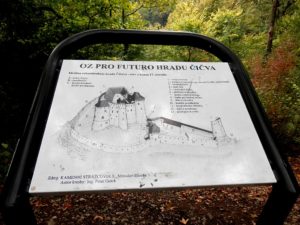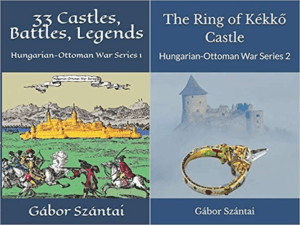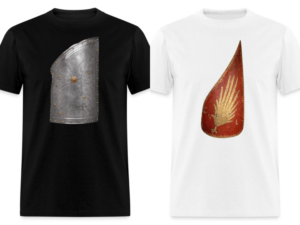Csicsva

The castle of Csicsva is above Csicsvaalja, which is called Podčičva in Slovakian. It belongs to the village of Telekháza (Sedliska) and is not too far from Eperjes (Presov). As we can see from this, the castle is located in the historical Upper Lands/Horná Zem/Felvidék, it is in Slovakia. However, the castle used to belong to the Hungarian Kingdom for a very long time.
Here is a short, silent video about the ruins: https://www.youtube.com/watch?v=IwMHiw6L0gY
The first mention of the place is from 1270 when King István V gave it to Palatine Rénold of Básztély (he was probably of French descent). Either he or his son, Gyulas, built the core of the castle. Their descendants, the Rozgonyi family lived in it, according to the sources of 1316 when the castle was first mentioned in writing. They had supported King Anjou Róbert Károly from the very beginning so they became barons.

The castle was significantly enlarged because it needed more room: the estates of Zemplén County had their meetings there. After the Rozgonyies, the Báthory family inherited it in 1523, then it went to the Drugeth family. The castle was far from the Turkish frontier so it remained in peace for a longer time.
King Szapolyai János laid a siege on it after 1526 and took it. Unfortunately, he had put it on fire. The whole library of Zemplén County was burned there. According to a legend, a special book was stored there which was called “The Book of Lies”. Most sadly, it perished in the fire, too.

The castle was returned to the Drugeth family and had some role in the campaigns of the Transylvanian princes in the 17th century. It was besieged by Prince Bethlen Gábor between 1619-1623 and by Prince Rákóczi György I in 1644. The castle was the place where the Hungarian nobles of Zemplén County joined the rebellion of Prince Thököly Imre against the Habsburgs in 1683.

The castle of Csicsva was owned by the Barkóczy and the Csáky families after 1691. Their garrison ceded the castle to the troops of Prince Rákóczi Ferenc II in 1703. The medieval castle was doomed in 1711 when the Austrian General Lauken had it exploded. There had not been any archeological excavation until 2001 but the trees were cut at least and some wooden rails were constructed for the tourists.

The castle was built on a 225-meter-high hill and many ruins can be still viewed of it. The fort had an inner castle and a semi-circular outer castle. The outer castle was divided into two parts by a wall. We can see the remnants of a tower-like building in the northern part while there is a round tower to the southeast. The inner castle was built on a 6-8 meters higher platform than the outer castle. Its drawbridge used to stand in the middle of the western section. You can find very nicely curved Renaissance and Gothic stones among the ruins.

Dear Readers, I can only make this content available through small donations or by selling my books or T-shirts:
Please, feel free to support me with a coffee here: You can check out my books "33 Castles, Battles, Legends" and "The Ring of Kékkő Castle" on Amazon or Draft2Digital, they are available in hardcover, paperback, or ebook: https://www.amazon.com/dp/198020490X or at https://books2read.com/b/boYd81
 My work can also be followed and supported on Patreon: Become a Patron!http://Become a Patron!
My work can also be followed and supported on Patreon: Become a Patron!http://Become a Patron!


https://hungarianottomanwars.myspreadshop.com/all




